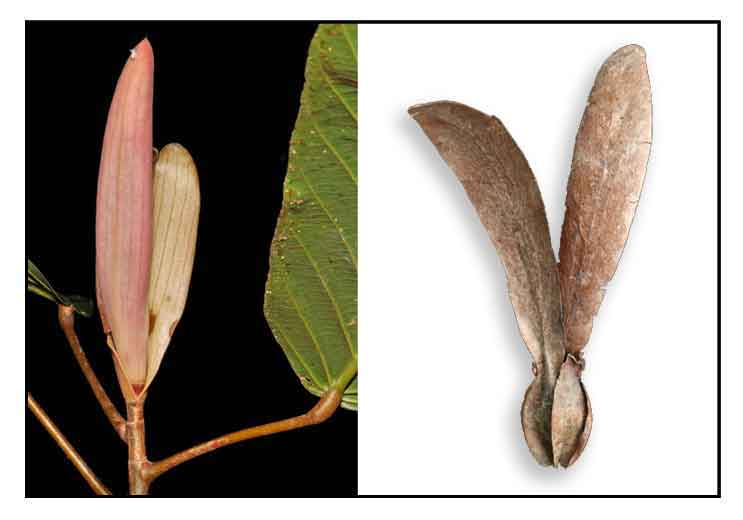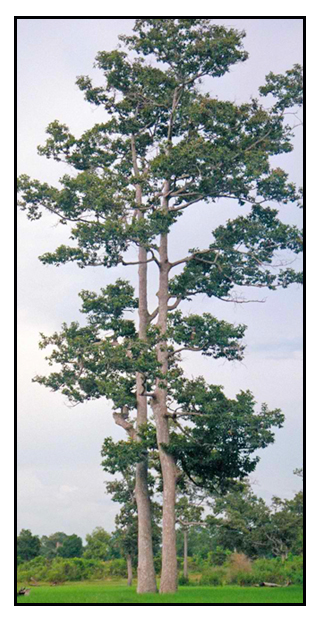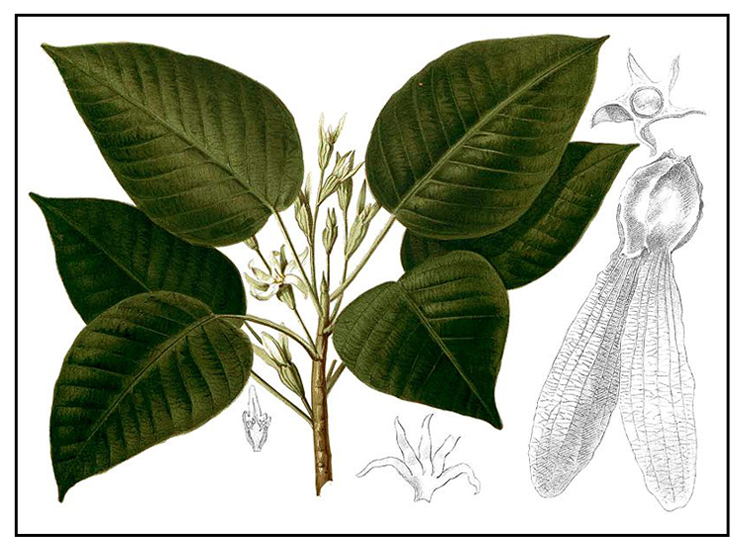
Family • Dipterocarpaceae
Apitong
Dipterocarpus grandiflorus (Blanco) Blanco
| Scientific names | Common names |
| Dipterocarpus blancoi Blume | Acete (Zambales) |
| Dipterocarpus grandiflorus (Blanco) Blanco | Alakal (Palawan) |
| Dipterocarpus griffithii Miq | Apitong (Tag., Bik., Bis., Sul.) |
| Dipterocarpus mottleyanus Hook.f. | Balau (Tag., Palawan Misamis, Zamb. |
| Dipterocarpus pterygocalyx Scheff. | Duko (Cagayan, Isabela) |
| Mocanera grandiflora Blanco | Hapitong (So. Tag.) |
| Vatica trigyna Griff. | Himpagkatan (S, Bis.) |
| Kamuyao (Cagayan) | |
| Palailan (Cagayan) | |
| Pamalalien (Cagayan) | |
| Pamantulen (Pang., Ilk.) | |
| Dipterocarpus grandiflorus (Blanco) Blanco is an accepted species. KEW: Plants of the World Online | |
| Other vernacular names |
| BORNEO: Bajan, Kalohing, Kangkawang, Kawang, Keruing, Keruing kulup, Tempudan. |
| BURMESE: Kanyin-byan. |
| HINDI: Gurjan. |
| INDONESIAN: Temudau tunden, Lagan bras, Aput. |
| MALAY: Keruing belimbing. |
| THAI: Yaang yuung, Yuung, Payoong. |
| VIETNAMESE: Dau dot tim, Dau giot tia, Dau rai. |
Updated February 2024 / June 2018
November 2015
![]()
 |
PHOTOS / ILLUSTRATIONS |
| OTHER IMAGE SOURCE: illustration / File:Dipterocarpus grandiflorus Blanco2.263-cropped.jpg / Plate from book / Flora de Filipinas / Francisco Manuel Blanco (OSA) / Uplodaded by Carol Spears / Public Domain / Wikimedia Commons |
| OTHER IMAGE SOURCE: / Photograph / Tree / © HubPages / Photo from: 2. Apitong (scientific name: Dipterocarpus grandiflorus) Source: flickr.com/photos/autanex/457715671/ click on image to go to source page / HubPages |
| OTHER IMAGE SOURCE: Dipterocarpaceae : Dipterocarpus grandiflorus / Leaf / Copyright © 2018 by P B Pelser & J F Barcelona (contact: pieter.pelser@canterbury.ac.nz) [ref. DOL131555] / Non-Commercial Use / Image modified / Click on image or link to go to source page / Phytoimages.siu.edu |
| OTHER IMAGE SOURCE: Dipterocarpaceae : Dipterocarpus grandiflorus / Terminal bud / Copyright © 2014 by P B Pelser & J F Barcelona (contact: pieter.pelser@canterbury.ac.nz) [ref. DOL91223] / Non-Commercial Use / Image modified / Click on image or link to go to source page / Phytoimages.siu.edu |
| OTHER IMAGE SOURCE: Dipterocarpus grandiflorus / Plantlet or fruits / Copyright © 2014 by Pericopsis / Non-Commercial Use / Image modified / Click on image or link to go to source page / Pericopsis |
Additional
Sources and Suggested Readings
|
• |
DOI: It is not uncommon for links on studies/sources to change. Copying and pasting the information on the search window or using the DOI (if available) will often redirect to the new link page. (Citing and Using a (DOI) Digital Object Identifier) |
| List of Understudied Philippine Medicinal Plants |
| New plant names needed The compilation now numbers over 1,300 medicinal plants. While I believe there are hundreds more that can be added to the collection, they are becoming more difficult to find. If you have a plant to suggest for inclusion, native or introduced, please email the info: scientific name (most helpful), local plant name (if known), any known folkloric medicinal use, and, if possible, a photo. Your help will be greatly appreciated. |
• |
 |

 Gen info
Gen info Botany
Botany Distribution
Distribution
